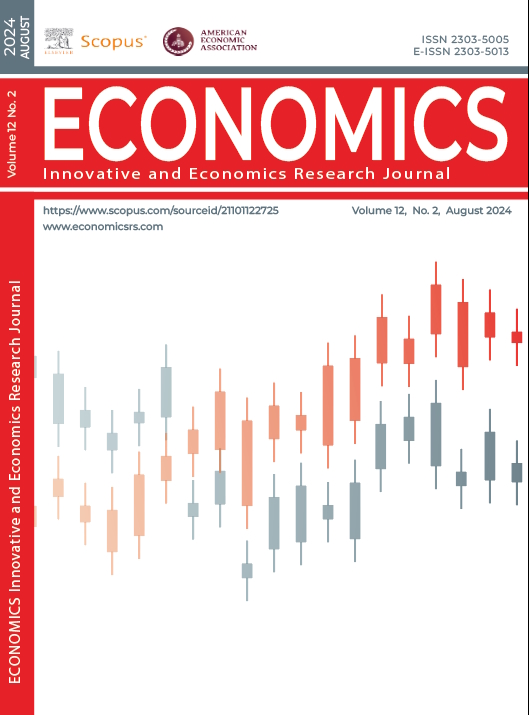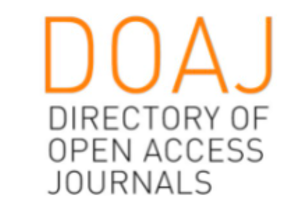DOES CREATIVITY AND PRODUCT INNOVATION BUILD BUSINESS CONTINUITY? INVESTIGATION OF SAMARINDA WEAVING CRAFT
DOI:
https://doi.org/10.2478/eoik-2024-0024Keywords:
creativity, product innovation, business continuity, woven sarong craftswomen, SamarindaAbstract
In practice, it is often found that the iconic woven sarong products from Samarinda still produce classic models without any new breakthroughs according to tastes, interests across generations, and market segmentation. Until now, another obstacle has been the difficulty of finding skilled artisans to modernize Samarinda’s woven sarongs. Following up on these dynamics, the manuscript aims to explore the causality between creativity and product innovation on the business continuity of the Samarinda woven sarong craft. In the study context, the independent variable is modified to include creativity and product innovation, while the dependent variable is focused on business continuity. To project the effect of creativity and product innovation on business continuity, a purposive sampling approach was associated with 261 sarong-woven craftswomen in Samarinda who still exist today. From the existing interview data, the data is tabulated using a multiple linear regression technique. Quantitative evidence shows that creativity has a significant effect on business continuity in the Samarinda woven sarong craft, but product innovation has an insignificant effect on business continuity in the Samarinda woven sarong craft. The implications for the future can be evaluated based on this research. Then, further theoretical insights can be expanded by exploring factors beyond creativity and product innovation.
References
Adam, N. A., & Alarifi, G. (2021). Innovation practices for survival of small and medium enterprises (SMEs) in the COVID-19 times: The role of external support. Journal of Innovation and Entrepreneurship, 10(1), 15. https://doi.org/10.1186/s13731-021-00156-6
Adetiya, L., & Rahmawan, G. (2021). The effect of product quality, innovation and price to purchasing decisions of noolde products. International Journal of Multiscience, 1(10), 60–70. https://multisciencejournal.com/index.php/ijm/article/view/141/106
Al-Ameedee, I. M. R., & Alzahrh, H. O. A. (2021). The role of creativity and business performance on crisis management: Evidence from Iraqi listed companies. International Journal of Economics and Finance Studies, 13(2), 45-64. https://www.researchgate.net/publication/358532535_THE_ROLE_OF_CREATIVITY_AND_BUSINESS_PERFORMANCE_ON_CRISIS_MANAGEMENT_EVIDENCE_FROM_IRAQI_LISTED_COMPANIES
Alam, S. S. (2012). Entrepreneur’s traits and firm innovation capability: An empirical study in Malaysia. Asian Journal of Technology Innovation, 9(1), 53–66. https://doi.org/10.1080/19761597.2011.578427
Ali, Q. S. A., Hanafiah, M. H., & Mogindol, S. H. (2023). Systematic literature review of business continuity management (BCM) practices: Integrating organisational resilience and performance in small and medium enterprises (SMEs) BCM framework. International Journal of Disaster Risk Reduction, 99, 104135. https://doi.org/10.1016/j.ijdrr.2023.104135
Amalia, I., Sudiarditha, I. K. R., & Suparno. (2022). The effect of creativity and skills on business success in small and medium business in East Jakarta. Jurnal Pendidikan Ekonomi, Perkantoran, dan Akuntansi, 3(2), 64-77. https://journal.unj.ac.id/unj/index.php/jpepa/article/view/30876
Anderson, N., Potočnik, K., & Zhou, J. (2014). Innovation and creativity in organizations: A state-ofthe-science review, prospective commentary, and guiding framework. Journal of Management, 40(5), 1297–1333. https://doi.org/10.1177/0149206314527128
Awa, A., & Palahudin, P. (2023). Explore the importance of creativity and innovation in micro, small and medium enterprises (MSMEs). Jurnal Visionida, 9(2), 199–217. https://doi.org/10.30997/jvs.v9i2.11241
Brem, A., Nylund, P. A., & Schuster, G. (2016). Innovation and de facto standardization: The influence of dominant design on innovative performance, radical innovation, and process innovation. Technovation, 50–51, 79–88. https://doi.org/10.1016/j.technovation.2015.11.002
Chahyani, D. P. (2022) Implementasi integrated marketing communication dalam mempromosikan sarung tenun Samarinda di Kampung Wisata Tenun Kalimantan Timur pada masa pandemi Covid-19. Masters Thesis. Institut Seni Indonesia Yogyakarta. http://digilib.isi.ac.id/12683/9/DHEA%20PRAMESTI_2022_NASKAH%20PUBLIKASI.pdf
da Silva Marinho, E., González, M. O. A., Galvão, M. S., de Araújo, A. C. A., Rosa, M. S. C., & Pereira, J. R. (2016). Relationship between creativity and product innovation: A literature review. Product Management & Development, 14(1), 32–37. https://www.pmd.igdp.org.br/article/10.4322/pmd.2016.007/pdf/pmd-14-1-32.pdf
Dada, O. G. (2021). Impact of product innovation on business sustainability: Evidence from telecom industry. Praxis International Journal of Social Science and Literature, 4(2), 65–73. https://doi.org/10.51879/PIJSSL/4.2.13
Darmawan, L. A., & Wuryandani, W. (2022). How picture storybook improve creative thinking skills and learning outcomes of elementary school students?. Journal of Educational Research and Evaluation, 6(3), 529–537. https://doi.org/10.23887/jere.v6i3.45566
Dessie, W. M., Mengistu, G. A., & Mulualem, T. A. (2022). Communication and innovation in the performance of weaving and pottery crafts in Gojjam, Ethiopia. Journal of Innovation and Entrepreneurship, 11(1), 9. https://doi.org/10.1186/s13731-022-00204-
Dziallas, M., & Blind, K. (2019). Innovation indicators throughout the innovation process: An extensive literature analysis. Technovation, 80–81, 3-29. https://doi.org/10.1016/j.technovation.2018.05.005
Farida, I., & Setiawan, D. (2022). Business strategies and competitive advantage: The role of performance and innovation. Journal of Open Innovation: Technology, Market, and Complexity, 8(3), 163. https://doi.org/10.3390/joitmc8030163
Fitriyani, F., Ellyawati, N., Abu, I., Sudarman, S., Reza, R., & Riyadi, R. (2023). Studi pada pengrajin sarung tenun Samarinda. PROMOSI: Jurnal Program Studi Pendidikan Ekonomi, 11(1), 54–64. http://dx.doi.org/10.24127/pro.v11i1.7858
Ferlito, R., & Faraci, R. (2022). Business model innovation for sustainability: A new framework. Innovation & Management Review, 19(3), 222–236. https://doi.org/10.1108/INMR-07-2021-0125
Galaitsi, S. E., Pinigina, E., Keisler, J. M., Pescaroli, G., Keenan, J. M., & Linkov, I. (2023). Business continuity management, operational resilience, and organizational resilience: Commonalities, distinctions, and synthesis. International Journal of Disaster Risk Science, 14(6), 713–721. https://doi.org/10.1007/s13753-023-00494-x
Green C. (2014). Measuring business continuity programmes in large organisations. Journal of Business Continuity & Emergency Planning, 8(1), 71–82. https://www.researchgate.net/publication/265391272_Measuring_business_continuity_programmes_in_large_organisations
Hanaysha, J. R., Al-Shaikh, M. E., Joghee, S., & Alzoubi, H. M. (2022). Impact of innovation capabilities on business sustainability in small and medium enterprises. FIIB Business Review, 11(1), 67–78. https://doi.org/10.1177/23197145211042232
Hanaysha, J. R., & Hilman, H. (2015). Product innovation as a key success factor to build sustainable brand equity. Management Science Letters, 5(6), 567–576. https://doi.org/10.5267/j.msl.2015.4.009
Handayani, T., Gian, M., & Kruger, N. (2022). The influence of product creativity on competitive advantage. Journal of Eastern European and Central Asian Research, 9(5), 741–748. https://doi.org/10.15549/jeecar.v9i5.1057
Hanfan, A. (2021). Product configuration capability for improving marketing performance of small and medium metal industry in Central Java - Indonesia. Jurnal Manajemen dan Kewirausahaan, 23(2), 138–147. https://doi.org/10.9744/jmk.23.2.138-147
Hani, E. H. (2021). What is business success? Case study. SEA: Practical Application of Science, 9(27), 191–195. https://seaopenresearch.eu/Journals/articles/SPAS_27_5.pdf
Harjanti, W., Ujianto, U., & Riduwan, A. (2020). Environmental dynamics and potential development of woven sarong business based on local wisdom. International Journal of Management Sciences and Business Research, 9(3), 1–9. https://doi.org/10.5281/zenodo.4916406
Hristov, I., & Chirico, A. (2019). The role of sustainability key performance indicators (KPIs) in implementing sustainable strategies. Sustainability, 11(20), 5742. https://doi.org/10.3390/su11205742
Indriastuti, H., Kasuma, J., ZA, S. Z., Darma, D. C., & Sawangchai, A. (2020). Achieving marketing performance through acculturative product advantages: The case of Sarong Samarinda. Asian Journal of Business and Accounting, 13(1), 241–261. https://www.researchgate.net/publication/342466848_Achieving_Marketing_Performance_through_Acculturative_Product_Advantages_The_Case_of_Sarong_Samarinda
Ivanova, N. (2022). People-centred business continuity: A case for inclusive design. Design Management Journal, 17(1), 30–48. https://doi.org/10.1111/dmj.12076
Juliana, N. O., Hui, H. J., Clement, M., Solomon, E. N., & Elvis, O. K. (2021). The impact of creativity and innovation on entrepreneurship development: Evidence from Nigeria. Open Journal of Business and Management, 9(4), 1743–1770. https://doi.org/10.4236/ojbm.2021.94095
Kantola, J., Liu, Y., Peura, P., de Leeuw, T., Zhang, Y., Naaranoja, M., Segev, A., & Huisingh, D. (2017). Innovative products and services for sustainable societal development: Current reality, future potential and challenges. Journal of Cleaner Production, 162, S1-S10. https://doi.org/10.1016/j.jclepro.2017.07.091
Katsaliaki, K., Galetsi, P., & Kumar, S. (2022). Supply chain disruptions and resilience: A major review and future research agenda. Annals of Operations Research, 319(1), 965–1002. https://doi.org/10.1007/s10479-020-03912-1
Kenyon, G. N., & Sen, K. C. (2015). Creating a competitive advantage. In: The Perception of Quality. Springer, London. https://doi.org/10.1007/978-1-4471-6627-6_2
Kleinknecht, A. (1996). New indicators and determinants of innovation: An introduction. In: Kleinknecht, A. (eds) Determinants of Innovation. Palgrave Macmillan, London. https://doi.org/10.1007/978-1-349-13917-0_1
Krauss, S. I., Frese, M., Friedrich, C., & Unger, J. M. (2005). Entrepreneurial orientation: A psychological model of success among southern African small business owners. European Journal of Work and Organizational Psychology, 14(3), 315–344. https://doi.org/10.1080/13594320500170227
Lee, C., Wu, C., & Jong, D. (2022). Understanding the impact of competitive advantage and core competency on regional tourism revitalization: Empirical evidence in Taiwan. Frontiers in Psychology, 13, 922211. https://doi.org/10.3389/fpsyg.2022.922211
Lee, S. M., & Trimi, S. (2018). Innovation for creating a smart future. Journal of Innovation and Knowledge, 3(1), 1–8. https://doi.org/10.1016/j.jik.2016.11.001
Lenzerini, F. (2011). Intangible cultural heritage: The living culture of peoples. European Journal of International Law, 22(1), 101–120. https://doi.org/10.1093/ejil/chr006
Lisdiyono, E. (2017). Exploring the strength of local wisdom in efforts to ensure the environmental sustainability. International Journal of Civil Engineering and Technology, 8(11), 340–347. https://iaeme.com/MasterAdmin/Journal_uploads/IJCIET/VOLUME_8_ISSUE_11/IJCIET_08_11_036.pdf
Li, B., Mousa, S., Reinoso, J. R. R., Alzoubi, H. M., Ali, A., & Hoang, A. D. (2023). The role of technology innovation, customer retention and business continuity on firm performance after post-pandemic era in China’s SMEs. Economic Analysis and Policy, 78, 1209-1220. https://doi.org/10.1016/j.eap.2023.05.004
Li, Y., Li, B., & Lu, T. (2022). Founders’ creativity, business model innovation, and business growth. Frontiers in Psychology, 13, 892716. https://doi.org/10.3389/fpsyg.2022.892716
Liu, Y. (2022). Application of digital technology in intangible cultural heritage protection. Mobile Information Systems, 2022, 7471121. https://doi.org/10.1155/2022/7471121
Lopes, J. M., Gomes, S., Pacheco, R., Monteiro, E., & Santos, C. (2022). Drivers of sustainable innovation strategies for increased competition among companies. Sustainability, 14(9), 5471. https://doi.org/10.3390/su14095471
Maier, D. (2018). Product and process innovation: A new perspective on the organizational development. International Journal of Advanced Engineering and Management Research, 3(6), 132– 138. https://www.ijaemr.com/uploads/pdf/archivepdf/2020/ijaemr_01_333.pdf
Manzano-García, G., & Ayala-Calvo, J.-C. (2020). Entrepreneurial orientation: Its relationship with the entrepreneur’s subjective success in SMEs. Sustainability, 12(11), 4547. https://doi.org/10.3390/su12114547
Margherita, A., & Heikkilä, M. (2021). Business continuity in the COVID-19 emergency: A framework of actions undertaken by world-leading companies. Business Horizons, 64(5), 683–695. https://doi.org/10.1016/j.bushor.2021.02.020
Mekonnen, H., Bires, Z. & Berhanu, K. (2022). Practices and challenges of cultural heritage conservation in historical and religious heritage sites: Evidence from North Shoa Zone, Amhara Region, Ethiopia. Heritage Science, 10(1), 172. https://doi.org/10.1186/s40494-022-00802-6
Mohamed, M. (1995). The origins of weaving centres in the Malay Peninsula. Journal of the Malaysian Branch of the Royal Asiatic Society, 68(1), 91–118. http://pascal-francis.inist.fr/vibad/index.php?action=getRecordDetail&idt=3733350
Montero, R., Pennano, C., & Ortigueira-Sánchez, L. C. (2023). Determinants of product innovation performance: Why are some innovations more successful than others?. Economía y Desarrollo, 158(2), 43–62. https://www.redalyc.org/pdf/4255/425554493003.pdf
Mošková, E., & Buganová, K. (2023). Improving business sustainability by connecting business continuity management and risk management. WSB Journal of Business and Finance, 57(1) 38–45. https://doi.org/10.2478/wsbjbf-2023-0005
Moyo, J., Mutsvangwa, S., Chabata, T. V., Sibanda, L., & Chari, F. (2023). Business continuity management and supply chain disruptions: A case of humanitarian organizations in Cyclone Idai in Zimbabwe. Cogent Business & Management, 10(2), 2235754. https://doi.org/10.1080/23311975.2023.2235754
Niedderer, K., & Townsend, K. (2014).Craft, innovation and creativity. Craft Research, 5(2), 149–153. https://doi.org/10.1386/crre.5.2.149_2
Norhidayat, N. (2022). Analysis of the local wisdom and role of women weavers in Samarinda. SALASIKA: Indonesian Journal of Gender, Women, Child, & Social Inclusion’s Studies, 5(2), 79–88. https://doi.org/10.36625/sj.v5i2.102
Nurzulifa, S., & Dwijanto, D. (2021). Creative thinking mathematical ability of students in Treffinger learning based on cognitive style. Unnes Journal of Mathematics Education, 10(1), 52-61. https://journal.unnes.ac.id/sju/ujme/article/view/32402
Padget, S. (2013). Creativity and critical thinking, 1st Ed. New York: Routledge.
Park, J. H., Li, Y., & Niu, W. (2023). Revisiting creativity and critical thinking through content analysis. Journal of Creativity, 33(2), 100056. https://doi.org/10.1016/j.yjoc.2023.100056
Peljko, Ž., & Auer Antončič, J. (2022). Impacts of entrepreneurial openness and creativity on company growth. Frontiers in Psychology, 13, 860382. https://doi.org/10.3389/fpsyg.2022.860382
Pinkse, J., & Bohnsack, R. (2021). Sustainable product innovation and changing consumer behavior: Sustainability affordances as triggers of adoption and usage. Business Strategy and the Environment, 30(7), 3120–3130. https://doi.org/10.1002/bse.2793
Purwadi, P. (2015). Kajian sarung Samarinda dari prespektif pemangku kepentingan. Kinerja, 12(2), 89–101. https://doi.org/10.30872/jkin.v12i2.9
Pusriadi, T., Sudarmiatin, S., & Mukhlis, I. (2022). Internationalization of SMES Sarong Samarinda in the industrial revolution era 4.0. Journal of Economics, Finance and Management Studies, 5(12), 3566–3572. https://doi.org/10.47191/jefms/v5-i12-13
Rahman, M. A., Hadi, S. S., Putra, A. F. R. E., & Fadhilah, N. (2023). Local economic development through tourism in Samarinda. AICOS: Asian Journal of Islamic Economic Studies, 1(1), 42–47. https://ejournal.iainkerinci.ac.id/index.php/acs/article/view/3538
Rathidevi, R., Aravindan, K. L., & Choong, Y. V. (2022). A conceptual model of entrepreneurial orientation (EO) and entrepreneurial career intentions (ECI) among female undergraduates. International Journal of Technology, 13(5), 979-988. https://doi.org/10.14716/ijtech.v13i5.5864 Reguia, C. (2014). Product innovation and the competitive advantage. European Scientific Journal, 1, 140–157. https://www.researchgate.net/profile/Kujtim-Bytyqi/publication/263661555_Principles_of_State-Building_The_case_of_Kosovo/links/0f31753b9889103c56000000/Principles-of-StateBuilding-The-case-of-Kosovo.pdf#page=151
Rifayanti, R., Kristina, G., Doni, S. R., Setiani, R., & Welha, T. P. (2017). Filosofi sarung tenun Samarinda sebagai simbol dan identitas ibu kota Kalimantan Timur. Psikostudia: Jurnal Psikologi, 6(2), 21–31. http://dx.doi.org/10.30872/psikostudia.v6i2.2373
Sawalha, I. H., & Anchor, J. R. (2023). Interpretations of business continuity management in the light of COVID-19. Management & Sustainability: An Arab Review, Vol. ahead-of-print, No. ahead-ofprint. https://doi.org/10.1108/MSAR-01-2023-0004
Septiarini, A. Saputra, R., Tejawati, A., Wati, M., Hamdani, H., &Puspitasari, N. (2021). Analysis of color and texture features for samarinda sarong classification. The 4th International Seminar on Research of Information Technology and Intelligent Systems (ISRITI). Yogyakarta, Indonesia 2021, pp. 102-107. https://doi.org/10.1109/ISRITI54043.2021.9702797
Sierra-Fontalvo, L., Gonzalez-Quiroga, A., & Mesa, J. A. (2023). A deep dive into addressing obsolescence in product design: A review. Heliyon, 9(11), e21856. https://doi.org/10.1016/j.heliyon.2023.e21856
Speight, P. (2011). Business continuity. Journal of Applied Security Research, 6(4), 56–59. https://doi.org/10.1080/19361610.2011.604021
Su, Y. H. (2023). The effect of product innovation, CSR, environmental sustainability and technology innovation on firm performance: A mediated moderation model. Economic Research-Ekonomska Istraživanja, 36(2), 2180417. https://doi.org/10.1080/1331677X.2023.2180417
Suherman, S. (2023). The influence of entrepreneurship knowledge and innovation on the continuity of food and beverage management business in Bandung District. Jurnal Scientia, 12(3), 2474– 2481. https://seaninstitute.org/infor/index.php/pendidikan/article/view/1578
Sulistiyowati, W., Rodiyah, I., & Astutik, I. I. (2022). Risk indicators in business processes in creative economy to improve product competitiveness. Tibuana, 5(1), 56–59. https://jurnal.unipasby.ac.id/index.php/tibuana/article/view/5113
Sulistyo, H., & Siyamtinah, S. (2016). Innovation capability of SMEs through entrepreneurship, marketing capability, relational capital and empowerment. Asia Pacific Management Review, 21(4), 196–203. https://doi.org/10.1016/j.apmrv.2016.02.002
Sundin, E., Nässlander, E., & Lelah, A. (2015). Sustainability indicators for small and medium-sized enterprises (SMEs) in the transition to provide product-service systems (PSS). Procedia CIRP, 30, 149–154. https://doi.org/10.1016/j.procir.2015.02.155
Supriadi, L. S. R., & Sui Pheng, L. (2017). Business continuity management (BCM). In: Business Continuity Management in Construction, pp. 41–73. https://doi.org/10.1007/978-981-10-5487-7_3
Suryani, N. K., Dewi, L. K. C., & Foeh, J. E. (2021). Business creation through creativity and innovation among students. Jurnal Minds: Manajemen Ide Dan Inspirasi, 8(2), 225–236. https://doi.org/10.24252/minds.v8i2.20981
Susiati, D., Aisyah, S., Sentosa, I., Nainggolan, H., & Palembang, S. P. (2023). Sustainable product innovation as the main driver of business growth in the green economy era. West Science Business and Management, 1(04), 233–244. https://doi.org/10.58812/wsbm.v1i04.246
Tammineedi, R. L. (2010). Business continuity management: A standards-based approach.Information Security Journal: A Global Perspective, 19(1), 36–50.https://doi.org/10.1080/19393550903551843
Taques, F. H., López, M. G., Basso, L. F., & Areal, N. (2021). Indicators used to measure service innovation and manufacturing innovation. Journal of Innovation & Knowledge, 6(1), 11–26. https://doi.org/10.1016/j.jik.2019.12.001
Teece, D. J. (2018). Business models and dynamic capabilities. Long Range Planning, 51(1), 40–49. https://doi.org/10.1016/j.lrp.2017.06.007
Thomran, M., Alshallaqi, M., Al-Mamary, Y. H., & Abdulrab, M. (2022). The key enablers of competitive advantage formation in small and medium enterprises: The case of the Ha’il region. Frontiers in Psychology, 13, 1030405. https://doi.org/10.3389/fpsyg.2022.1030405
Tohidi, H., & Jabbari, M. M. (2012). Presenting new product in the process innovation. Procedia - Social and Behavioral Sciences, 31, 891-893. https://doi.org/10.1016/j.sbspro.2011.12.163
Trachuk A. V., & Linder N. V. (2021). Key indicators of innovation performance: Perception of significance and practical application. Strategic Decisions and Risk Management, 12(4), 284-298. https://doi.org/10.17747/2618-947X-2021-4-284-298
Trisnawati, N. L. D. E., Kartika, R. D., & Kasih, N. L. S. (2021). Business continuity: Application of the value of Catur Purusa Artha and product innovation in holding company of BUMDes. International Journal of Social Science and Business, 5(3), 303–310. https://doi.org/10.23887/ijssb.v5i2.36346
Vaz-Curado, S., & Mueller, A. P. (2019). The concept of entrepreneur of Schumpeter in comparison to Kirzner. MISES: Interdisciplinary Journal of Philosophy Law and Economics, 7(3), 613–642. https://doi.org/10.30800/mises.2019.v7.1223
Vitasurya, V. R. (2016). Local wisdom for sustainable development of rural tourism, Case on Kalibiru and Lopati Village, Province of Daerah Istimewa Yogyakarta. Procedia - Social and Behavioral Sciences, 216, 97–208. https://doi.org/10.1016/j.sbspro.2015.12.014
Wang, S., & Su, D. (2022). Sustainable product innovation and consumer communication. Sustainability, 14(14), 8395. https://doi.org/10.3390/su14148395
Wang, Y. Z., & Ahmad, S. (2024). Green process innovation, green product innovation, leverage, and corporate financial performance; Evidence from system GMM. Heliyon, 10(4), e25819. https://doi.org/10.1016/j.heliyon.2024.e25819
Wijaya, A., Jiuhardi, J., ZA, S. Z., Nurjanana, N., & Kurniawan, E. A. (2023). Determinants on small scale business: An empirical evidence from Indonesia. International Journal of Sustainable Development and Planning, 18(1), 305–314. https://doi.org/10.18280/ijsdp.180132
Xing, J., Zeng, Z., & Zio, E. (2019). Dynamic business continuity assessment using condition monitoring data. International Journal of Disaster Risk Reduction, 41, 101334. https://doi.org/10.1016/j.ijdrr.2019.101334
ZA, S. Z, Tricahyadinata, I., Hudayah, S., & Mustari, A. (2021). Leading attraction to “Visit of East Kalimantan”. Prospects of Pampang Cultural Village, Samarinda. Journal of Environmental Management and Tourism, 12(8), 2067–2073. https://journals.aserspublishing.eu/jemt/article/view/6650
ZA, S. Z., Martiyanti, D., Achmad, G. N., Lesmana, D., & Yudaruddin, R. (2022). Impact of operational activities on customer satisfaction in cafes and restaurants: A mediating role of infrastructural elements. Innovative Marketing, 18(4), 13–24. http://dx.doi.org/10.21511/im.18(4).2022.02
Zahara, Z., & Nersiwad, N. (2017). Role of resource-based entrepreneurship development to increase competitiveness of traditionally woven sarong creative industry. Russian Journal of Agricultural and Socio-Economic Sciences, 7(67), 121–128. https://doi.org/10.18551/rjoas.2017-07.14
Downloads
Published
How to Cite
Issue
Section
License
Copyright (c) 2024 ECONOMICS - INNOVATIVE AND ECONOMICS RESEARCH JOURNAL

This work is licensed under a Creative Commons Attribution-NonCommercial-NoDerivatives 4.0 International License.























